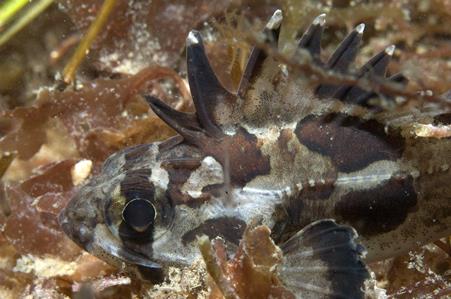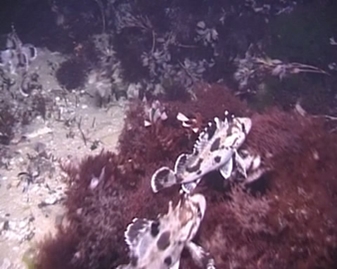General Description
Head with prominent spines, including a large spine below eye that erects forwards; dorsal fin long-based, spinous and soft-rayed portions separated by a notch; lateral line scales present, body otherwise naked. Body and fins overall pale to light brown with a mottled or marbled pattern of irregular darker blotches and spots; underside pale. To 23 cm, although most smaller.
Biology
These ambush predators are common in seagrass beds, and feed on crustaceans and small fishes. They are armed with venomous spines and are responsible for many painful stings received by people wading in the shallows, especially through seagrass beds.
Habitat
Sheltered sandy or muddy areas of bays, harbours and estuaries, in dpeths of 0-35 m.
Soft substrates
Distribution guide
Southern Australia.
Species Group
Depth
Shore (0-1 m)
Shallow (1-30 m)
Deep ( > 30 m)
Water Column
Max Size
23 cm
Harmful
Venomous spines can inflict mild to severe pain.
Commercial Species
No
Global Dispersal
Native to Australia
Conservation Status
- DSE Advisory List : Not listed
- EPBC Act 1999 : Not listed
- IUCN Red List : Not listed








